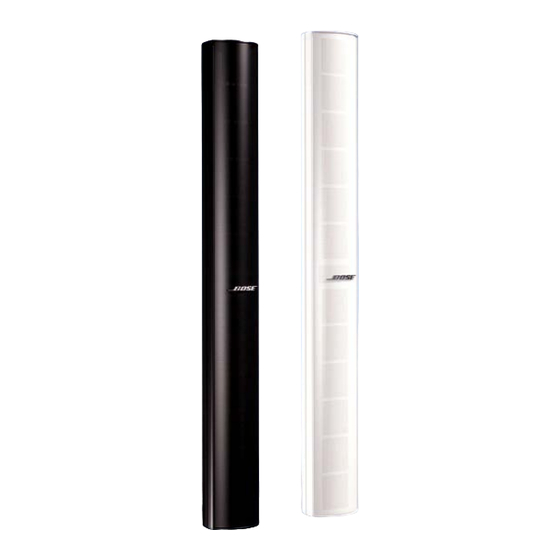Bose Panaray MA12 Технические основы и обсуждение - Страница 5
Просмотреть онлайн или скачать pdf Технические основы и обсуждение для Акустическая система Bose Panaray MA12. Bose Panaray MA12 36 страниц. Modular line array loudspeaker
Также для Bose Panaray MA12: Руководство пользователя (2 страниц), Руководство по установке (16 страниц), Руководство по установке (8 страниц), Руководство по установке (7 страниц), Руководство по эксплуатации (11 страниц)

hung in the air and tilted down. Hang-and-tilt has become the de facto standard for sound
reinforcement in virtually every kind of venue, from retail spaces, to atriums, churches,
schools, gymnasiums, auditoriums, city halls, airports, and sports facilities.
Manufacturers including Bose offer a wide range of speakers used in the hang-and-tilt
approach, and similarly, offer a wide range of tools to help the designer of these systems. As
a result, dealers, contractors, consulting engineers, and others have learned to deliver systems
that perform well in satisfying the major customer requirements using this approach.
The purpose of this paper is to show that the Bose MA12™ modular array represents a
significant and important extension to the hang-and-tilt approach. To do this, our strategy
relies on an explanation of the speaker's unique sound radiation pattern, and how that
radiation pattern, and the thin line-shaped source necessary to produce it, often allows
designers to meet customer requirements better and at a lower cost than before. The argument
begins with a review of the fundamental assumption that first led the industry to the hang-
and-tilt approach and then moves on to explain the approach's strengths and remaining
weaknesses.
THE HANG-AND-TILT APPROACH
Original assumption
W
led the industry to embrace the hang-and-tilt method and dedicate decades of research,
HAT
development and marketing effort to perfect it? Why do so many speakers end up in the air
and tilted down?
The answer can be traced to a fundamental property of the speakers used – specifically,
that the sound waves they radiate spread in all three dimensions: up and down, left and right,
in and out. These are called spherical waves because the sound radiates in all directions, like
a sphere. As a result, the sound intensity, or sound pressure level from spherical wave sources
decreases by 6 dB whenever the distance is doubled, as shown in Figure 1. (To be exact, this
is true beyond a certain distance from the speaker. At very close distances the behavior is
different.)
For example, if a listener is four meters from the speaker and the level is 78 dB-SPL, then
when the listener is eight meters away – twice the distance – the level is 6 dB less, or 72 dB-
SPL. And while a speaker often has different intensity levels at different angles (as is the case
with any directional speaker), no matter what angle is chosen, when the distance is doubled
along that same angle, the level decreases by 6 dB.
®
Bose
MA12™ Modular Array: Technical Foundation & Discussion
April 2002, © Bose Corporation, All Rights Reserved
Page 5 of 36
